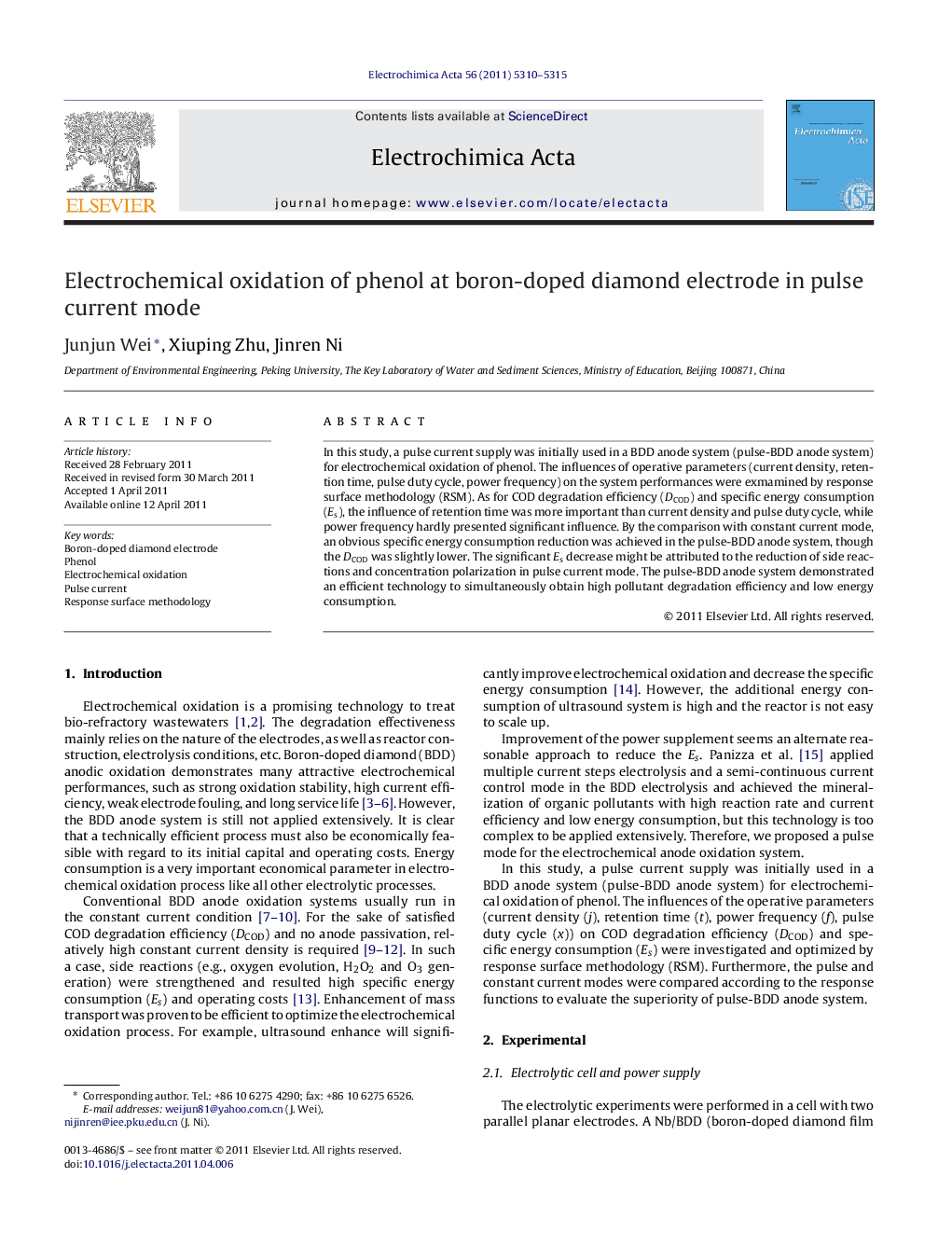| Article ID | Journal | Published Year | Pages | File Type |
|---|---|---|---|---|
| 189784 | Electrochimica Acta | 2011 | 6 Pages |
In this study, a pulse current supply was initially used in a BDD anode system (pulse-BDD anode system) for electrochemical oxidation of phenol. The influences of operative parameters (current density, retention time, pulse duty cycle, power frequency) on the system performances were exmamined by response surface methodology (RSM). As for COD degradation efficiency (DCOD) and specific energy consumption (Es), the influence of retention time was more important than current density and pulse duty cycle, while power frequency hardly presented significant influence. By the comparison with constant current mode, an obvious specific energy consumption reduction was achieved in the pulse-BDD anode system, though the DCOD was slightly lower. The significant Es decrease might be attributed to the reduction of side reactions and concentration polarization in pulse current mode. The pulse-BDD anode system demonstrated an efficient technology to simultaneously obtain high pollutant degradation efficiency and low energy consumption.
► A pulse current supply was first conducted to the BDD anode system to minimize the energy consumption. ► A response surface methodology (RSM) was introduced to investigate the influence the operative parameters on the performance of the pulse-BDD anode system. ► By the comparison with constant current mode, we evaluated the superiority of pulse current mode in energy saving and discussed the mechansim.
